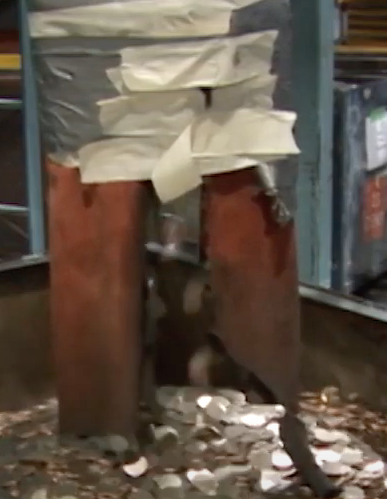minting coins at the philadelphia mint
This is a somewhat tedious video if you do not skip forwards to each of the steps, and it isn't comprehensive by any means in showing the minting process. So why post it on here? Well, it shows a number of the steps, and allows the viewer to carefully observe what's happening. Here is what you can see in the video:
1. The blanking process (strip being fed into the blanking press.)
2. Upsetting of the blanks into planchets (raising the rim on them.)
3.Striking the planchets into coins.
4.Presidential dollar's being struck (and if you look carefully, they do not have the edge lettering yet.)
5.Presidential dollars after having had the edge lettering applied.
6.The Mint employee's carefully examining the coins for die rotations and die errors, by examining the coins with a gauge of sorts, and also through a magnifying device.
7.The counting and bagging of the coins in "ballistic" bags, which can hold massive quantities of coins.
A few things we noted are below.
1.There is tape in the duct tube feeding the blanks into the bin. Ever wonder how tape gets struck into coins? This is a possibility. Also, notice the wide assortment of random materials in the videos--all of these could be struck into the coins.

2.Bowtie leftover scrap. We see this for sale on the market, and also you see coins struck on it. These would be "struck bow tie scrap" if struck by the dies.

3.Planchet bins. These planchet bins are sometimes used for other denominations than one, which presents an opportunity for a leftover planchet in a bin getting accidentally fed into another denomination's coining press at the Mint, which would result in an off-metal or wrong planchet error.

4.Quality check. This is when Mint employees check the coin's for die varieties. Mint errors are found with other processes, but here, the Mint employee can carefully examine the dies to see if they are still striking a "perfect" coin, and also to make sure they are still in alignment. Note that they also inspect the edge lettering on the presidential dollars (to make sure it's present, and also to make sure it's not doubled or weak.)


